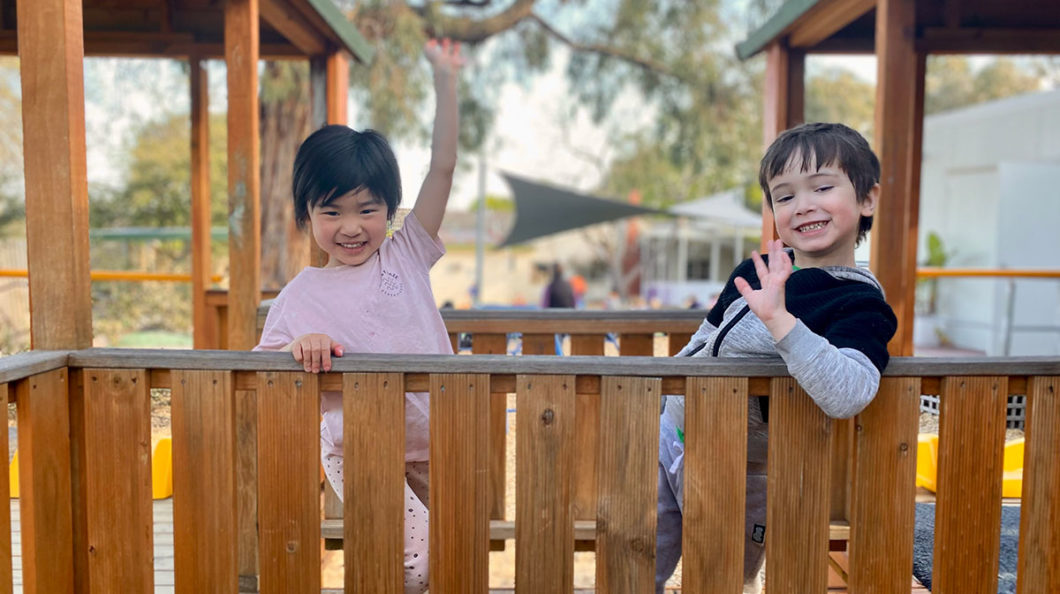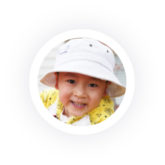Separation anxiety varies wildly between children, and while it is a completely normal aspect of children’s social and brain development, it can be deeply upsetting for both parents and kids. If your child is struggling with separation anxiety, it is important to remember that their unwillingness to leave you is a sign that strong and healthy attachments have been developed between the two of you, and with time and practice, reducing separation anxiety in children can be achieved.
What is Separation Anxiety in Children?
Separation anxiety in children is the fear of being away from parents or caregivers. While, as adults, we know that our children will be safe and happy when left in the care of others, like friends, extended family or educators, it is completely natural for young children to anxious about leaving their parents.
Looking at separation anxiety from an evolutionary perspective can help us to understand it; from a primitive, survival point of view, the safest place for an infant (of any species) is with its parents, and if they weren’t fazed by separation or strangers, they would get lost far more easily, so a level of separation anxiety is ingrained in children’s brains and is a normal part of development.
When does Separation Anxiety Begin?
Separation can begin at any age, but most commonly develops when a child is between one and four years old.
Babies usually adapt well to other people, and as long as their needs are being met, most babies are able to adjust to different caregivers.
In infants, separation anxiety can develop once a child begins to gain an understanding of object permanence, or in other words, once they realise that people and objects still exist when out of sight. Some infants can develop this understanding at as young as four or five months of age, however it more typically shows up when infants are around nine months old. Infants of this age are now aware that when they can’t see a parent or caregiver, they’ve gone away, which can leave them feeling upset as they don’t understand yet understand the concept of time, so don’t know when they’ll return.
Many children skip the infancy stage of separation anxiety, and start showing signs as toddlers, somewhere between fifteen and eighteen months old. As your toddler becomes more independent and strengthens their attachment to you, separation anxiety can become more pronounced, and they may become anxious, upset or agitated when a parent leaves.
Separation anxiety can be both easier and more difficult to handle concurrently as your child gets older. Kindergarten age children more clearly understand the reasons for a parent leaving and have a better handle on the concept of time, however they are still developing the emotional vocabulary to express and comprehend the distressing feelings they may have when separated from their parents.
What does Separation Anxiety look like?
Signs of Separation Anxiety in Infants:
- Crying when passed from a parent to another caregiver, when put down or when a parents leaves their sight
- Going rigid, or tensing up, when encountering unfamiliar people or arriving at day care
- Clinginess
- Turning their head in a parent’s chest
Signs of Separation Anxiety in Toddlers:
- Reluctance to leave their parents, whether that be at bedtime, when going to childcare or simply being in another room
- Seeking reassurance, such as wanting to be held
- Clinging to parents or other behaviours that indicate anxiety such as hiding behind a parent’s legs
- Crying or meltdowns when parents leave
Signs of Separation Anxiety in Kindergarteners:
- Severe or extreme crying, particularly if it continues for an extended time (over five minutes)
- Clinging to parents
- Reluctance to participate in activities that involve separation, such as going on a playdate, to dance class or to kindy
- Anxiety around when they will be picked up or how long they will be left in a situation without a parent for, like being at childcare, a friend’s house or with a babysitter
- Complaining of physical illness, particularly tummy aches
- Not wanting to sleep alone
- Frequent nightmares
How can you Help a Child with Separation Anxiety?
There are numerous things you can do to help your child with separation anxiety to make separations easier and less stressful.
- Familiarise your child with new settings before leaving them in a new place. For example, if your child will be going to childcare for the first time, or switching to a new centre, spend time in the environment with them first by engaging in activities that have a positive association to build their confidence and comfort with the new place.
- Make sure all your child’s immediate needs are met before leaving. Children, particularly babies and toddlers, are more susceptible to experiencing separation anxiety when they’re tired, hungry or sick, so try to schedule separations after naps and feedings.
- Make use of comfort objects. When your child is in an unfamiliar place, or even an environment they know well (but isn’t home), having a comfort item, like a favourite blanket or soft toy can help them to feel safe.
- Create quick goodbye rituals. Rituals can be really reassuring to children as they make it easier for the child to know what to expect. It can be something as simple as a hug and wave, a special handshake or a three kisses on the forehead.
- Try not to linger when saying goodbye. For children with separation anxiety, often the thought of the separation is worse than the event itself, so if you draw out leaving and the transition time, it can extend their anxiety (and yours).
- Tell your child when you’ll be back in terms they can understand. For example, “I’ll be back after nap time but before afternoon snack”.
- Give them your full attention when leaving. Providing your child with your full, undivided attention and being affectionate and loving when leaving can help them to feel more secure.
- Keep your promises. To build your child’s confidence and trust that you will come back for them, always return when you say you will, and tell your child when you’re leaving. Particularly with younger children, it can be tempting to leave while they’re distracted to avoid tears, however this makes the event more distressing for the child and their uncertainty about when you’ll leave can increase separation anxiety.
- Acknowledge their feelings and model appropriate behaviour. Making sure to recognise your child’s feelings of anxiety about separation helps them to feel heard, and maintaining a calm, happy and composed demeanour when leaving can help to ease their anxiety as well.
- Practice separation. Getting your child used to being away from you in small steps is a really helpful technique as gives them the chance to understand that being away from you doesn’t have to be scary, which helps to build their confidence with separation. Taking your child on play dates, leaving them with their grandparents or signing up to a sport lesson or dance class are all easy ways to help your child practice being separated from you for a short time, helping to increase their comfort with being away from you.
Separation anxiety is a completely normal developmental stage, but also a complex one. With time, practice and reassurance, you can help your child to build their confidence in being away from you and get started on your journey to reducing separation anxiety.



